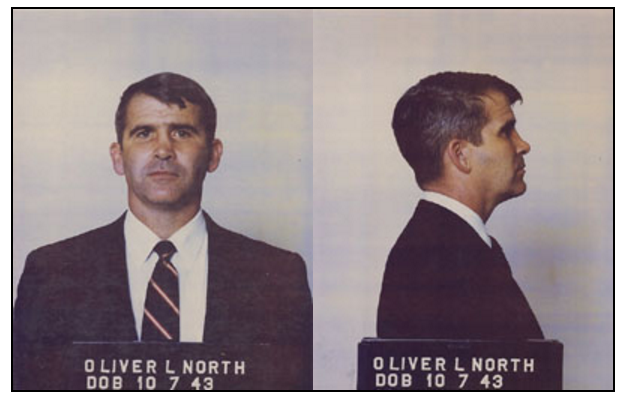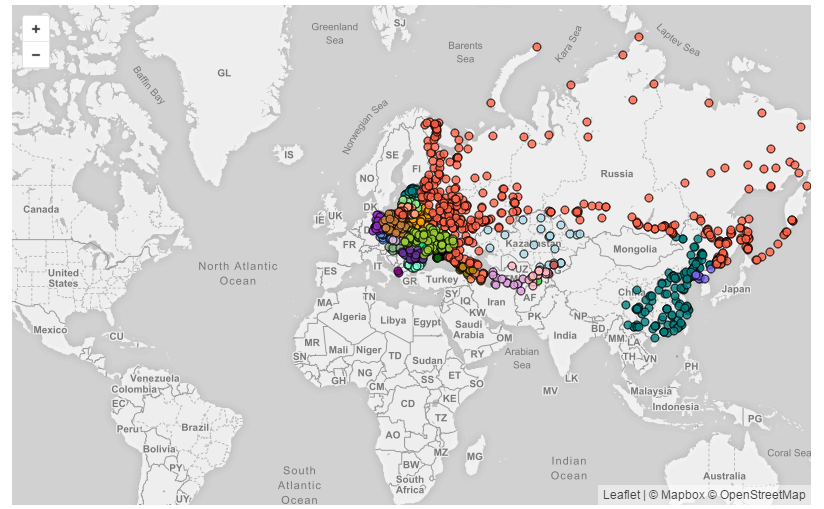nuke list release and other FOIA releases
Potsdam’s fate were it targeted according to the SAC list.
MIT’s Future of Life Institute has built a remarkable interactive map of the nuclear targets listed for potential destruction in the Strategic Air Command’s nuclear weapons requirements study for 1959, which was released to the National Security Archive thanks to the Mandatory Declassification Review process. The map, created by Professor Max Tegmark and his partners at NukeMap, allows users to “detonate” any of the 1,100 nuclear targets from the SAC list to “see how large an area would be destroyed by the bomb of your choice, as well as how many people could be killed.” For example, selecting Vilnius, Lithuania and clicking “detonate” shows that an attack described in the SAC study would kill an estimated 19,180 people and injure 160,930 more. “Detonating” the Potsdam, Germany target shows that an attack there would kill an estimated 78,830 and injure 231,110. Pyongyang? 489,310 estimated fatalities and 1,186,870 injuries. If you have similar ideas of ways to map or crowdsource the data and documents obtained by the National Security Archive, drop us a line!
In an encouraging example of bipartisan, bicameral work to strengthen the FOIA, members of the House Oversight and Government Reform Committee, the House Judiciary Committee, and the Senate Judiciary Committee sent the US comptroller general “a letter requesting the General Accountability Office (GAO) conduct a comprehensive review of the federal government’s compliance with the Freedom of Information Act.” The letter seeks reports on seven key FOIA topics, including a catalog of the number of exemptions described under Exemption 3 and the use of such exemptions by each agency, and audits of agencies on compliance with, and implementation of, the FOIA’s requirements.
The bipartisan, bicameral move comes as the House weighs adopting the Senate’s FOIA reform bill, which is likely FOIA reform’s best chance for passage at this late point in the legislative session.
A FOIA lawsuit brought by MIT’s Ryan Shapiro shows that agricultural lobbying groups, including the United Egg Producers, the National Cattlemen’s Beef Association and the National Pork Producers Council, are promoting a controversial rider to FY 2017’s Agriculture Appropriations bill, whose reporting language (guidance that does not have statutory force) would exempt the lobbying groups’ communications with the USDA’s research and promotional boards under the FOIA. The lobbyists argued that the exemption of these communications from FOIA was justified on the grounds that the USDA boards “are funded solely with producer dollars, and therefore are not agencies of the Federal government or subject to the Freedom of Information Act (Foia).” This characterization of the USDA boards has already been disproved by the Supreme Court, which has ruled that since food producers’ contribution to the boards’ funding is mandatory, “that they constitute government speech.” The bill was approved by the House Appropriations Committee but has not yet passed.
The move to hide communications between food producers and the USDA comes a year after a FOIA request filed by Shapiro revealed that the USDA boards colluded with the egg industry to halt the rise of a Silicon Valley egg-replacement startup, and adds another layer to the complicated relationship between USDA regulators and food producers. Shapiro says, “Now that some of their blatantly improper dealings have been exposed via Foia, instead of cleaning up their acts, these boards are attempting to exempt themselves from Foia altogether.”
The FOIA cutout in the House appropriations bill is not supported by the National Farmers Union, among others. The NFU correctly says, “To prohibit the use of Freedom of Information Act (FOIA) requests with Research and Promotion boards would suggest that we, as producers, have something to hide. That is a troubling message in the areas of research and promotion, and is a particularly bad message to consumers about their food.”
Senators Patrick Leahy (D-Vt.) and Chuck Grassley (R-Iowa) recently thwarted another attack on FOIA from the agriculture sector after language was inserted into the Commodity Futures Trading Commission reauthorization bill, which would have exempted information under FOIA’s Exemption 3, but was removed during its markup. It’s unclear why food producers feel such a need to hide their dealings from FOIA, but it’s likely this isn’t the last time we will see such tactics.
2012 testimony by the Office of the Director of National Intelligence’s General Counsel, Robert Litt, before a closed Senate Intelligence Committee hearing indicates that the Obama administration “sought administrative penalties for leaks — rather than criminal ones — with equal or greater vigor.” The effectiveness of the stance is questionable, as Litt’s testimony preceded Edward Snowden’s leaks by a year, and the total number of individuals sanctioned administratively was not disclosed. The revelation comes thanks to a FOIA request and will likely be another black mark on the administration’s quest to be the most transparent ever.
The Office of Government Information Services has released Part Two of its examination of agencies’ use of “still interested” letters, finding, among other things, that “Of the 46,019 requests the FOIA programs we reviewed processed in FY 2014, about 5.5 percent (2,535 requests) were closed using a method that might be related to a still interested letter.” OGIS examined seven agencies’s FOIA programs for its assessment, and noted in their findings “that the FOIA programs reported variations in how requests closed using still interested letters are reported and that the programs did not have written policies regarding how the letters should be used.” This report, like Part One, does not examine the legality of this practice, as nothing in the FOIA itself allows an agency to close a request if the agency does not receive a response from a “still interested” letter.
The FBI ignored its own rules impersonating an AP journalist in 2007, and then deemed the rule-breaking reasonable when it came to light, thanks to a FOIA lawsuit brought by AP and Reporter’s Committee for Freedom of the Press. The bizarre story began in 2007 when the FBI created a fake story on bomb threats made at a Seattle-area high school, attributed it to the AP, and then sent it in a private MySpace message to the student suspected of making the threats against the school. “By clicking on the link, the suspect unwittingly downloaded a piece of malware, a computer bug that enabled agents to identify his Internet protocol address.” The Electronic Frontier Foundation (EFF) obtained hundreds of pages of documents on the story through the FOIA, and the AP and RCFP sued under the FOIA. Documents obtained from the suit include details on the “sensitive circumstances” that must be met for an undercover agent to impersonate a member of the news media. The lawsuit also spurred the release of documents from the FBI’s Cyber Division that concluded after the 2007 ruse became public that “the FBI’s failure to observe its own guidelines was not unreasonable.”
The FBI is not the only law enforcement agency impersonating people on social media in controversial ways to further its investigations. In 2014 a Drug Enforcement Agency (DEA) agent impersonated a young woman on Facebook, posted racy photos of her and pictures of her underage son and niece on the social media site, all as part of a drug investigation.

One DEA agent impersonated a young woman on Facebook, posting these photos of underage children as part of an investigation.
The CIA marked the five-year anniversary of the raid that killed Osama bin Laden last Sunday with a “deeply bizarre social marketing move” – live-tweeting the events of five years ago as though they were currently happening. The agency’s Twitter account, which has been repeatedly called tone-deaf, “is run by a woman named Carolyn Reams, who is the agency’s social media manager and who is referred to around the agency as ‘the social Khaleesi’ — a reference to the ‘mother of dragons’ from the popular ‘Game of Thrones’ book and television series.” The move may, however, make it more difficult for the CIA to issue “Glomar” responses to FOIA requests on the Abbottabad raid, which it has done continually despite providing Hollywood filmmakers unparalleled access to information about the raid.
The National Security Archive joined 30 other groups in urging the National Archives to ensure the preservation of the Senate Intelligence Committee’s report on the CIA’s torture program by calling it what it is – a federal record. The Archive has repeatedly urged the Archivist of the US to use his clear statutory authority to label the report a federal record, noting that the most important thing is to preserve this record for history and not let it be destroyed, even if it can’t be declassified anytime soon.

From United States v. Oliver L. North, Office of the Independent Counsel (OIC) Papers, National Archives & Records Administration, College Park, Maryland.
Want to stay on top of the latest FOIA news? Click here to sign up for our weekly FRINFORMSUM email newsletter.
Happy FOIA-ing!


Comments
Post a Comment